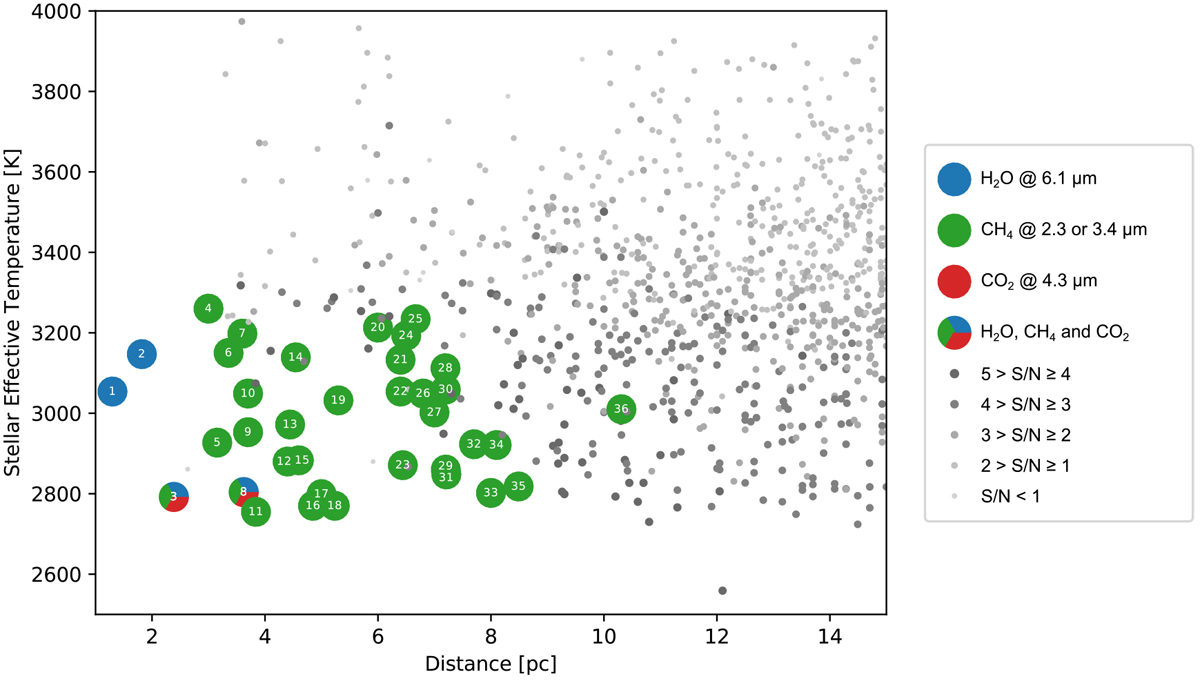Fig. 10

Detectability of hypothetical nearby Earth-like planets around M dwarfs with a single transit. Coloured dots show planets with an S/N of at least 5 for the corresponding spectral features (H2O: blue, CH4: green and CO2: red). Morethan one colour means that multiple spectral features can be detected with a single transit. The sizes of the grey dots indicate the highest S/N of all spectral features. The numbers inside the coloured dots correspondto the following host stars: 1: Proxima Centauri, 2: Barnard’s star, 3: Wolf 359, 4: Ross 154, 5: Ross 248, 6: Ross 128, 7: GJ 15 B, 8: DX Cancri, 9: GJ 1061, 10: YZ Ceti, 11: Teegarden’s star, 12: Wolf 424, 13: L 1159-16, 14: GJ 1245 B, 15: GJ 1245 A, 16: GJ 412 B, 17: LHS 2090, 18: GJ 1116, 19: LHS 1723, 20: GJ 1005, 21: L 43-72, 22: GJ 3737, 23: GL Virginis, 24: GJ 1128, 25: LSPM J2146+3813, 26: Ross 619, 27: G 161-7, 28: GJ 4053, 29: G 141-36, 30: SCR J0740-4257, 31: GJ 1286, 32: LHS 1070, 33: SCR J0838-5855, 34: NLTT 40406, 35: GJ 3146, 36: LSPM J0539+4038.
Current usage metrics show cumulative count of Article Views (full-text article views including HTML views, PDF and ePub downloads, according to the available data) and Abstracts Views on Vision4Press platform.
Data correspond to usage on the plateform after 2015. The current usage metrics is available 48-96 hours after online publication and is updated daily on week days.
Initial download of the metrics may take a while.


